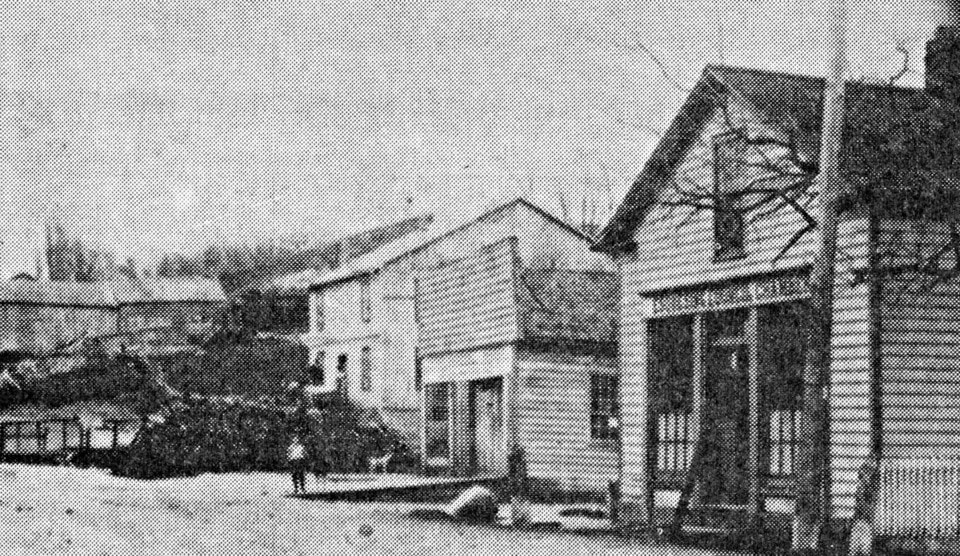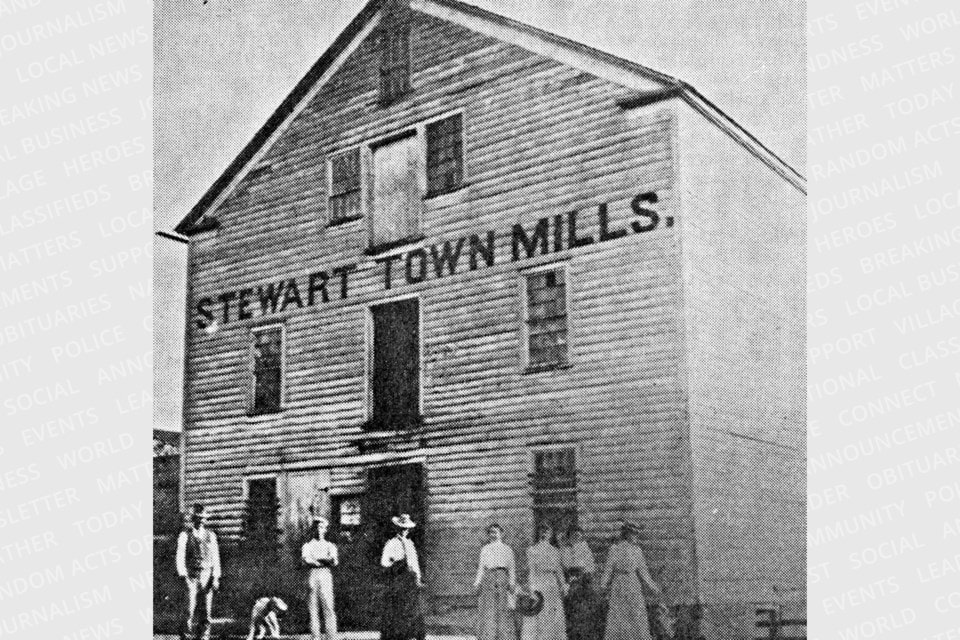Stewarttown once a prominent place of stature and industry

As a historic village that’s rapidly being encompassed by the ever-growing Georgetown, Stewarttown was once a prominent place of stature and industry.
Considered to be the oldest community in Esquesing Township (present-day Halton Hills), Stewarttown - first named Esquesing Village - was settled in 1819 and was geographically placed in the centre of the township on the main route of Trafalgar Road, making it the capital of the municipality.
Along with being located on a major artery that early settlers utilized as a way to transport goods down to the harbour in Oakville, the location was mainly selected because of the west branch of the Credit River, which runs through the area and was seen as useful for powering a mill.
The earliest Europeans to settle the community were primarily Scottish immigrants, with the valley that the Credit River runs through being the nucleus of the village. The name of the village derives from brothers John and Duncan Stewart, who settled in the community after emigrating from Scotland. It was the Stewart brothers who saw potential in the river and built a small grist and saw mill, later being taken over by James Young and then by Walter Lawson.
In 1840, a post office called ‘Esquesing’ would be relocated to the settlement, having previously been situated south of the village on Lot 9, Concession 7. The name of 'Stewarttown’ was adopted in 1846, but the post office would retain the name of Esquesing.
Curling was a popular sport for the early settlers and was played during the winter months on the mill pond, using 'stones' made from beech logs. Adding to the local culture, the first Esquesing Fall Fair was held in the village in 1846.
By 1850, Stewarttown was bustling with activity, having three hotels, a tannery, grist and saw mill, blacksmith shop, two churches, a school, and various merchants. The future of the village looked bright until 1856 when the Grand Trunk Railway was constructed, completely bypassing Stewarttown. By not having direct access to the railway, the neighbouring communities of Georgetown and Acton soon became the dominating industrial hubs, leaving Stewarttown in the shadows.
According to the Halton County Atlas of 1877, the population of Stewarttown was 200 and there were hopes that the village would see an economic rebound, but that never materialized. Despites this setback, Stewarttown remained the capital of Esquesing Township until the amalgamation of Halton Hills on January 1, 1974.
On an interesting side note, Tom Longboat, an Onondaga distance runner from the Six Nations Reserve near Brantford, did much of his training in Stewarttown for the 1907 Boston Marathon. While staying in the village at Hill’s Hotel, as part of Longboat’s training, he would run from Stewarttown to Hornby.
Longboat would break into the headlines when he won the 1907 marathon and set what was then a new record for the 24.5-mile distance in a time of 2 hours and 24 minutes, beating the previous record by 4 minutes and 59 seconds.
While Stewarttown is no longer an economic hub, today, it’s a residential community consisting of a middle school, St. John’s Anglican Church and a handful of heritage buildings that serve as a reminder of the historic village’s once prominent and industrious past.
Article written by Scott Brooks, with information from Dills Collection/Halton’s Pages of the Past/Halton County Atlas of 1877/EHS/HHPL.
Considered to be the oldest community in Esquesing Township (present-day Halton Hills), Stewarttown - first named Esquesing Village - was settled in 1819 and was geographically placed in the centre of the township on the main route of Trafalgar Road, making it the capital of the municipality.
Along with being located on a major artery that early settlers utilized as a way to transport goods down to the harbour in Oakville, the location was mainly selected because of the west branch of the Credit River, which runs through the area and was seen as useful for powering a mill.
The earliest Europeans to settle the community were primarily Scottish immigrants, with the valley that the Credit River runs through being the nucleus of the village. The name of the village derives from brothers John and Duncan Stewart, who settled in the community after emigrating from Scotland. It was the Stewart brothers who saw potential in the river and built a small grist and saw mill, later being taken over by James Young and then by Walter Lawson.
In 1840, a post office called ‘Esquesing’ would be relocated to the settlement, having previously been situated south of the village on Lot 9, Concession 7. The name of 'Stewarttown’ was adopted in 1846, but the post office would retain the name of Esquesing.
Curling was a popular sport for the early settlers and was played during the winter months on the mill pond, using 'stones' made from beech logs. Adding to the local culture, the first Esquesing Fall Fair was held in the village in 1846.
By 1850, Stewarttown was bustling with activity, having three hotels, a tannery, grist and saw mill, blacksmith shop, two churches, a school, and various merchants. The future of the village looked bright until 1856 when the Grand Trunk Railway was constructed, completely bypassing Stewarttown. By not having direct access to the railway, the neighbouring communities of Georgetown and Acton soon became the dominating industrial hubs, leaving Stewarttown in the shadows.
According to the Halton County Atlas of 1877, the population of Stewarttown was 200 and there were hopes that the village would see an economic rebound, but that never materialized. Despites this setback, Stewarttown remained the capital of Esquesing Township until the amalgamation of Halton Hills on January 1, 1974.
On an interesting side note, Tom Longboat, an Onondaga distance runner from the Six Nations Reserve near Brantford, did much of his training in Stewarttown for the 1907 Boston Marathon. While staying in the village at Hill’s Hotel, as part of Longboat’s training, he would run from Stewarttown to Hornby.
Longboat would break into the headlines when he won the 1907 marathon and set what was then a new record for the 24.5-mile distance in a time of 2 hours and 24 minutes, beating the previous record by 4 minutes and 59 seconds.
While Stewarttown is no longer an economic hub, today, it’s a residential community consisting of a middle school, St. John’s Anglican Church and a handful of heritage buildings that serve as a reminder of the historic village’s once prominent and industrious past.
Article written by Scott Brooks, with information from Dills Collection/Halton’s Pages of the Past/Halton County Atlas of 1877/EHS/HHPL.
